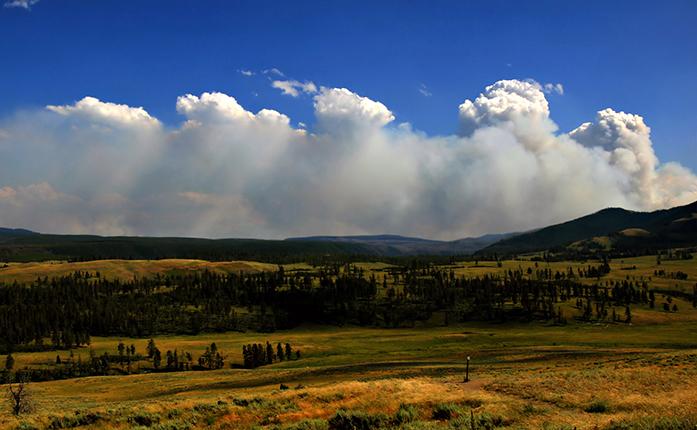By Tessa Solomon
On Sunday, author, activist, and conservationist Terry Tempest Williams took her editor from New York City to Yellowstone National Park.
“She [was] standing in the Lamar Valley for the first time. For a woman whose words are her business, she couldn’t find any,” Williams said. “She literally was speechless.”
Williams, familiar with — but still impressed by — the landscape, rarely finds herself at such a loss for words. From the Grand Tetons in Wyoming to Acadia in Maine to Big Bend in Texas and more, Williams has devoted her career to illuminating the political, spiritual, and personal histories of America’s parks.
Tonight, she will make a stop in Iowa City to read from her new book, The Hour of Land: A Personal Topography of America’s National Parks at Prairie Lights, 15 S. Dubuque St.
“It was a rigorous book. I think in many ways I was writing out of my limitations. I’m not a historian. I’m not a scientist,” Williams said. “And I think every writer has to ask themselves, by what authority do I write. I was writing from the authority of my heart.”
As an award-winning naturalist author and native of the interior West, Williams’s authority is well earned. The passion of her prose is tempered only by its eloquence. A harmony of prose, poetry, and letters, The Hour of Land reads not only as a memoir but an exploration and outcry of the current condition of the United States’ many National Parks.
“If you were to have a raven’s point of view of national parks, what you see is a landscape battered by the oil and gas development,” Williams said. “It looks like an exposed nervous system. In the interior West, we all feel a deep sense of urgency in what we’re losing.”
In the book, Williams traces through minor and major conservations in American history, honoring the movements that have traveled, and beaten, each park’s winding path.
“When you visit a place like the Canyonlands, you are aware of this deep sense of time,” Williams said. “You feel the winds carrying the songs of the ancient ones. You’re very mindful that not only is this saturated with past peoples, but there are present native peoples who live there as well.”
She welcomes this reality with humility, an attitude pervasive throughout her memoir.
“[The parks] are breathing spaces in a world that is increasingly holding its breath. They remind us that we are not the only species that lives and breathes and loves on this planet.”
Even within the span of a short phone interview, Williams’s descriptive power and fervent reverence of nature proves to be captivating.
She narrates a vision of the South Dakota Badlands — bison rolling in the dust; howling prairie dogs; trilling meadowlarks; wild stallions with wind-whipped manes — until the heat of the plains is palpable from The Daily Iowan’s newsroom.
“To me, that is the wild. And there’s something reassuring about that,” Williams said. “Even in the midst of all of these changes, there is a peace that reminds us what wholeness looks like and feels like.”



